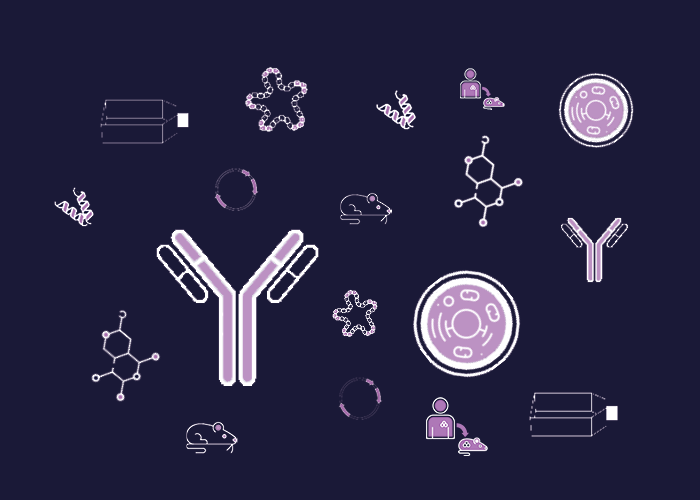
Cat. #155234
Anti-CD3 [C363.29B]
Cat. #: 155234
Unit size: 100 ug
Availability: 3-4 weeks
Target: CD3
Class: Monoclonal
Host: Rat
£300.00
This fee is applicable only for non-profit organisations. If you are a for-profit organisation or a researcher working on commercially-sponsored academic research, you will need to contact our licensing team for a commercial use license.
Contributor
Institute: Yale University
Tool Details
*FOR RESEARCH USE ONLY (for other uses, please contact the licensing team)
- Name: Anti-CD3 [C363.29B]
- Research fields: Immunology
- Class: Monoclonal
- Conjugation: Unconjugated
- Host: Rat
- Description: Monoclonal antibody which binds an epitope within the CD3-TCR complex. Background and Research Application The CD3 complex, composed of four distinct CD3 polypeptide chains (CD3?, CD3? and 2X CD3?), associates with the T cell antigen receptor (TCR. CD3 is a member of the immunoglobulin superfamily, involved in antigen recognition, T lymphocyte activation and signal transduction. CD3 may play a role in TCR-induced growth arrest, cell survival and proliferation. The CD3 antigen is present on 68-82% of normal peripheral blood lymphocytes, 65-85% of thymocytes and Purkinje cells in the cerebellum. It is never expressed on B or NK cells. Decreased percentages of T lymphocytes may be observed in some autoimmune diseases. This antibody reacts with an epitope located in the epsilon chain of the CD3/TCR complex.
- Immunogen: P07766
- Immunogen uniprot id: P07766
Target Details
- Target: CD3
- Target background: Monoclonal antibody which binds an epitope within the CD3-TCR complex. Background and Research Application The CD3 complex, composed of four distinct CD3 polypeptide chains (CD3ÄÂ?, CD3ÄÂĂ´ and 2X CD3?ĂÂ), associates with the T cell antigen receptor (TCR. CD3 is a member of the immunoglobulin superfamily, involved in antigen recognition, T lymphocyte activation and signal transduction. CD3 may play a role in TCR-induced growth arrest, cell survival and proliferation. The CD3 antigen is present on 68-82% of normal peripheral blood lymphocytes, 65-85% of thymocytes and Purkinje cells in the cerebellum. It is never expressed on B or NK cells. Decreased percentages of T lymphocytes may be observed in some autoimmune diseases. This antibody reacts with an epitope located in the epsilon chain of the CD3/TCR complex.
Handling
- Format: Liquid
- Concentration: 0.9-1.1mg/ml
- Unit size: 100 ug
- Storage buffer: PBS with 0.02% azide
- Storage conditions: -15° C to -25° C
- Shipping conditions: Dry ice
References
- Mohamad et al. 2019. Nutr Metab (Lond). 16:49. PMID: 31372176.
- Zulkawi et al. 2017. BMC Complement Altern Med. 17(1):344. PMID: 28666436.
- Muraille et al. 2010. PLoS Pathog. 6(10):e1001154. PMID: 20976202.
- Portoles et al. 1989. J Immunol. 142(12):4169-75. PMID: 2470817.



